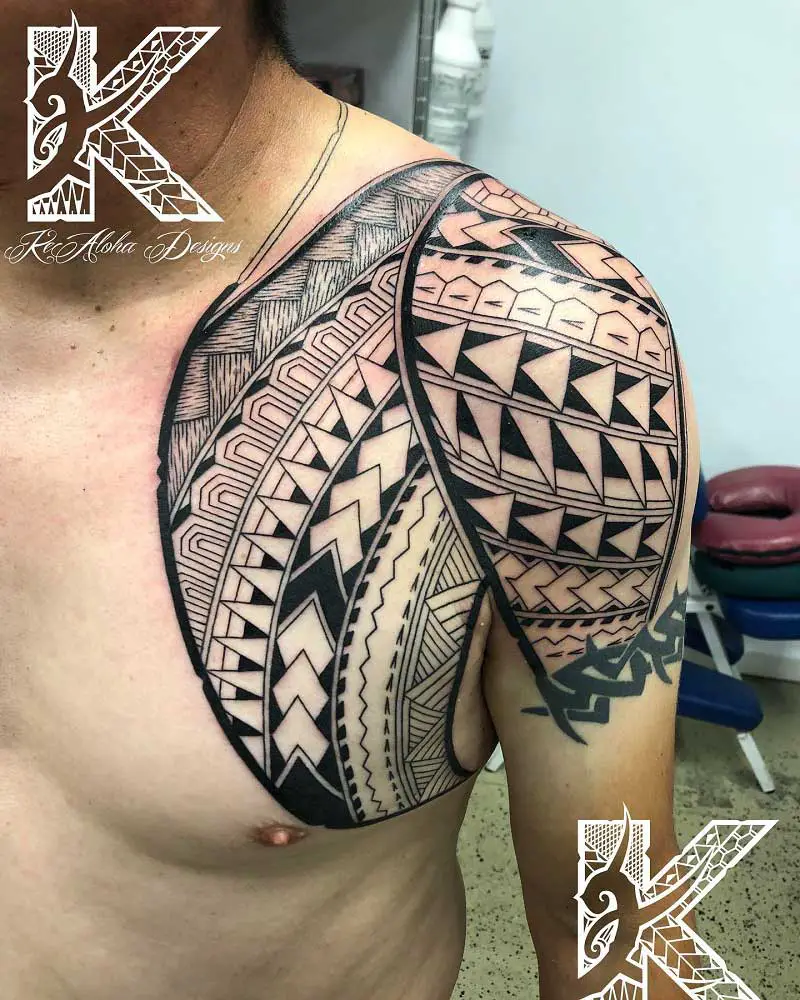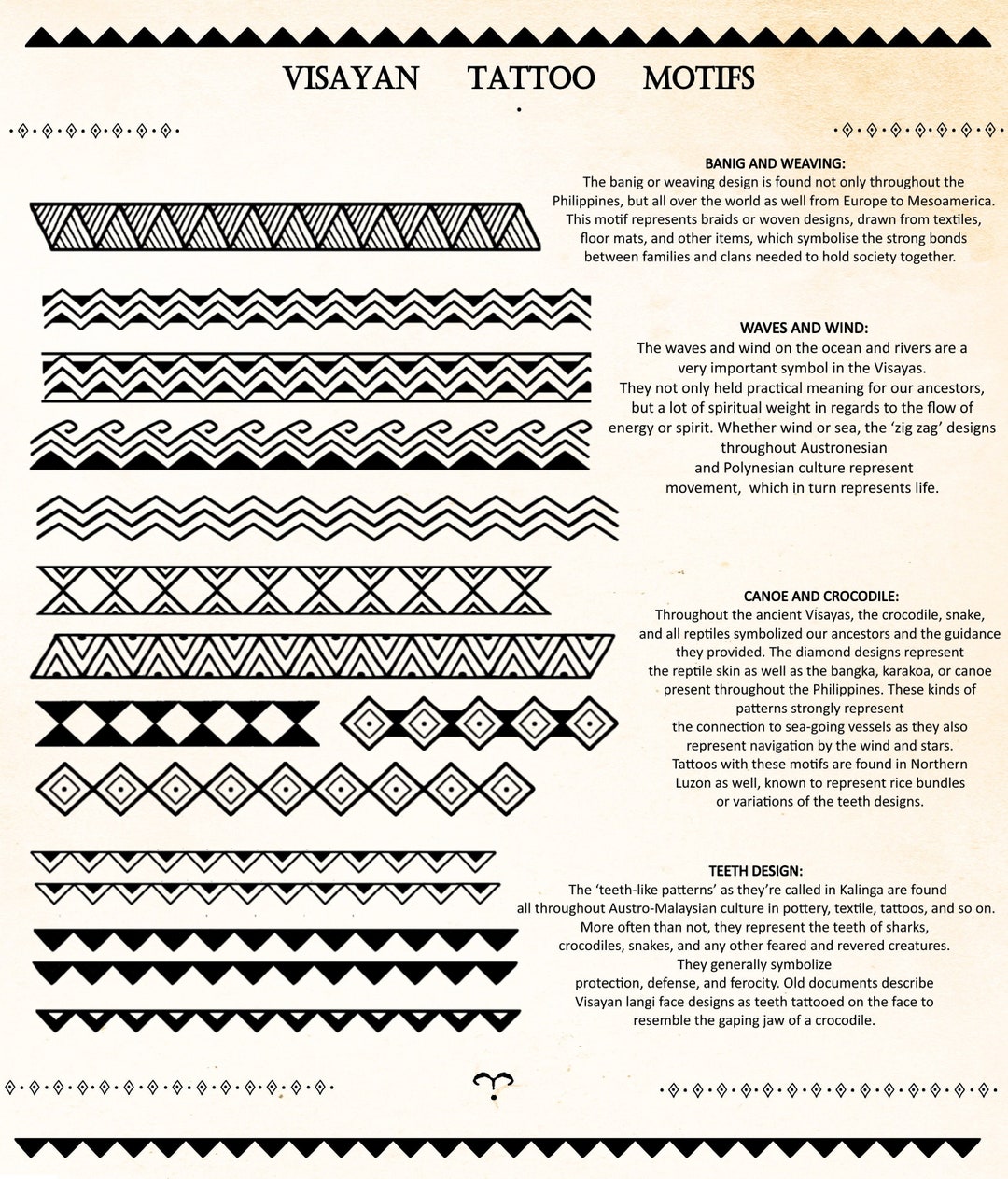The art of tattooing has a rich and ancient history, with its roots stretching back to various cultures and civilizations. Among the myriad of tattoo styles, tribal tattoos hold a special place, evoking a sense of strength, tradition, and cultural identity. In this comprehensive exploration, we delve into the intricate world of tribal tattoos, uncovering their meanings, their cultural significance, and their enduring appeal in modern body art.
The Origins and Evolution of Tribal Tattoos

Tribal tattoos, often characterized by bold, black designs and intricate patterns, have a long and varied history. The exact origins are difficult to pinpoint, as tattooing practices have been present in numerous ancient cultures. However, we can trace the evolution of tribal tattoos through the centuries, understanding how they have evolved and adapted while retaining their powerful symbolism.
Ancient Civilizations and Tribal Tattooing
The practice of tattooing can be traced back to ancient civilizations such as the Egyptians, who used tattoos for decorative and religious purposes as early as 2000 BCE. In Egypt, tattoos were often associated with fertility, protection, and status. Similarly, the Maori people of New Zealand have a rich tradition of tattooing, known as ta moko, which involves intricate facial markings that signify tribal affiliation, social status, and personal achievements.
The Polynesian islands also have a strong tattoo culture, with each island group and tribe having its unique tattoo traditions and symbols. These tattoos, known as tatau, are often large and cover extensive areas of the body. They represent the wearer's genealogy, social status, and spiritual beliefs.
European Exploration and the Spread of Tribal Tattoos
With the Age of Exploration, European sailors and explorers encountered tribal tattooing practices in various parts of the world. They often documented these encounters, bringing back knowledge and even tattooed artifacts, which influenced European art and fashion. This led to the rise of “primitive” or “tribal” tattoo styles in Western cultures during the 19th and early 20th centuries.
Modern Revival and Popularization
The mid-20th century saw a resurgence of interest in tribal tattoos, particularly in the Western world. This revival was influenced by a growing fascination with indigenous cultures, a desire for unique and meaningful body art, and the emergence of renowned tattoo artists who specialized in tribal designs. The 1970s and 1980s witnessed a boom in tribal tattooing, with styles inspired by various cultures, including the Maori, Polynesian, and Native American traditions.
The Meanings and Symbolism of Tribal Tattoos

Tribal tattoos are more than just aesthetic choices; they are deeply symbolic and often hold personal and cultural significance. The meaning behind a tribal tattoo can vary widely depending on the culture and individual interpretation. Here, we explore some common themes and symbols associated with tribal tattoos.
Protection and Strength
One of the most prevalent themes in tribal tattoos is protection and strength. Many ancient cultures believed that tattoos could bestow supernatural powers, ward off evil spirits, or provide physical protection in battle. For example, in some Polynesian cultures, warriors would receive specific tattoos to signify their bravery and to protect them in combat.
Spirituality and Ritual
Tattoos often play a significant role in spiritual and ritualistic practices. In many indigenous cultures, tattoos are used as a form of communication with the spiritual realm. They can represent a person’s connection to their ancestors, their tribe, or their personal spiritual journey. For instance, the Maori ta moko is believed to enhance a person’s mana (spiritual power) and establish a connection with their ancestors.
Genealogy and Heritage
Tribal tattoos can also serve as a visual representation of a person’s genealogy and heritage. In Polynesian cultures, tattoos often tell the story of a person’s lineage, with specific symbols and designs denoting different tribes, families, or even personal experiences and achievements.
| Tattoo Symbol | Cultural Meaning |
|---|---|
| Shark Teeth | Protection and Guidance (Polynesian) |
| Spirals | Power and Spiritual Energy (Maori) |
| Tribal Masks | Ancestor Worship and Guidance (Native American) |

Personal Expression and Identity
In modern times, tribal tattoos have become a form of self-expression and a way to assert one’s identity. While the cultural significance remains, many people choose tribal designs for their aesthetic appeal and the deep, symbolic meanings they carry. Some opt for traditional tribal designs, while others create unique, personalized tattoos that blend elements from various cultures or incorporate their own experiences and beliefs.
Tribal Tattoo Styles and Their Distinctive Features
Tribal tattoos come in a wide array of styles, each with its own unique characteristics and origins. Understanding these styles can help appreciate the diversity and complexity of tribal tattooing.
Maori Tribal Tattoos
The Maori people of New Zealand have a highly developed and intricate tattoo tradition. Ta moko is characterized by bold, curved lines and spirals, often covering large areas of the face and body. These tattoos are deeply symbolic, representing a person’s mana, their tribal affiliation, and their personal achievements. The process of receiving ta moko is a sacred ritual, performed using traditional chisels and pigments.
Polynesian Tribal Tattoos
Polynesian tattoos, known as tatau, are renowned for their bold, black designs and intricate geometric patterns. These tattoos often cover extensive areas of the body, such as the arms, legs, and back. Each island group within Polynesia has its unique tattoo traditions, with specific symbols and motifs. For example, Samoan tattoos, or Pe’a, are known for their large, intricate designs covering the entire body, while Tahitian tattoos often feature bold, stylized animals and plants.
Native American Tribal Tattoos
Native American tribal tattoos, also known as indigenous tattoos, encompass a wide range of styles and meanings. These tattoos often feature bold, black lines and symbols that represent a person’s tribe, their spiritual beliefs, and their connection to nature. Common symbols include animals, such as bears and wolves, which represent strength and guidance, and tribal masks, which are believed to connect the wearer with their ancestors.
Modern Tribal Tattoos
In contemporary tattoo culture, tribal designs have evolved and adapted, often blending traditional elements with modern artistic styles. Modern tribal tattoos may incorporate elements from various cultures, such as Celtic knots or Japanese symbols, creating unique, personalized designs. These tattoos can be large and intricate or small and discrete, depending on the wearer’s preference and the desired symbolism.
The Process of Getting a Tribal Tattoo
Getting a tribal tattoo is a significant decision, and it’s important to approach the process with careful consideration and respect for the cultural traditions that inspire these designs.
Choosing a Design
When selecting a tribal tattoo design, it’s essential to understand the cultural significance and symbolism behind the chosen elements. Research the specific culture or tradition that inspires the design, and consider consulting with a tattoo artist who specializes in tribal tattoos. They can guide you in creating a design that is meaningful, respectful, and aesthetically pleasing.
Finding the Right Tattoo Artist
Finding a skilled and experienced tattoo artist is crucial for a successful tribal tattoo. Look for artists who have a deep understanding of the cultural traditions associated with tribal tattoos and who can create designs that are both authentic and personalized. Check their portfolio, read reviews, and consider asking for recommendations from friends or other tattoo enthusiasts.
The Tattooing Process
The tattooing process for tribal designs can vary depending on the style and size of the tattoo. Traditional tribal tattoos, such as ta moko or tatau, may involve specialized techniques and tools. Modern tribal tattoos are typically created using standard tattoo machines and black ink. The process can be lengthy, especially for large or detailed designs, and may require multiple sessions.
Caring for Your Tribal Tattoo

Proper aftercare is essential to ensure your tribal tattoo heals correctly and maintains its vibrant appearance. Follow these steps to care for your new tattoo:
- Keep the tattooed area clean and dry for the first 24 hours.
- Apply a thin layer of tattoo ointment or moisturizer to the tattooed area several times a day for the first week.
- Avoid exposing the tattoo to direct sunlight or tanning beds for at least 4 weeks.
- Use a high-SPF sunscreen when the tattoo is fully healed to prevent fading.
- Refrain from swimming or soaking in water for at least 2 weeks to prevent infection.
Conclusion
Tribal tattoos are more than just body art; they are a powerful expression of cultural heritage, personal identity, and spiritual beliefs. With their rich history and deep symbolism, tribal tattoos continue to captivate and inspire people around the world. Whether you choose a traditional design or a modern interpretation, a tribal tattoo can be a beautiful and meaningful addition to your body’s canvas.
How do I ensure my tribal tattoo design is respectful of cultural traditions?
+Researching the specific culture or tradition that inspires your design is crucial. Consult with a tattoo artist who specializes in tribal tattoos and has a deep understanding of the cultural context. They can guide you in creating a design that is respectful, authentic, and personally meaningful.
Can I combine different tribal styles in one tattoo design?
+Absolutely! Many modern tribal tattoos blend elements from various cultures, creating unique and personalized designs. However, it’s important to approach this with sensitivity and respect for each culture’s traditions. Consult with a skilled tattoo artist who can help you create a cohesive and meaningful design that blends different tribal styles.
What should I consider when choosing a tribal tattoo artist?
+Look for an artist who has experience with tribal tattoos and understands the cultural significance behind these designs. Check their portfolio for examples of their work, and read reviews or ask for recommendations. A skilled tribal tattoo artist will guide you through the design process, ensuring your tattoo is both beautiful and meaningful.